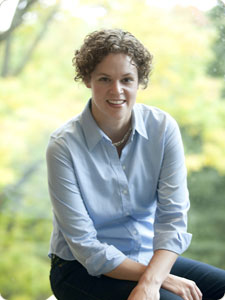Rural Pathways to College
By Tom Porter
“Fewer adults in the community are likely to have been to college,” she says, leading to a lower family income level and therefore a lower socio-economic status.
“And they generally have smaller schools, fewer classes, fewer extra-curricular activities.”
And yet, she says, a surprising amount of them do attain a post-secondary education.
“In 2007, 42 percent of rural high school graduates attended a four-year college, which is a higher percentage than from any other type of locale: city, suburb or town.”
By 2011, the figure had dropped slightly, to percent, “but was still higher than the rate for graduates from cities of towns.”
Nelson has a written a paper on the subject – featured in the latest edition of the journal Rural Sociology – and recently presented the lunchtime faculty seminar “Where Everybody Knows Your Name: Community Social Capital in Rural Students’ Pathways to College.”
The term “social capital,” she explains, refers to “the benefits that students can get from relationships. So these are the people in your life that are giving you the information you need to get to college, given that getting into a college is a benefit.”
In terms of factors that increase the likelihood of that happening, Nelson says they generally come from three places: the school, where teachers and guidance counselors play a key role; the family, where parents who have often not been to college urge their offspring to climb higher up the education ladder; and the community more broadly.
In the case of rural students, Nelson found the impetus came from “all three, with the school acting as a central location, a hub for students to acquire other sources of social capital.”
Nelson sampled 43 students for the study, which grew out of an advanced seminar she taught in the sociology department in 2012. Aided by research assistants, she spent the last two summers analyzing the data.
All students sampled in the study come from Maine, which is the most rural state in the US, she explains, based on the percentage of people who live in rural areas.
Communities in sparsely populated places tend to be more socio-economically diverse than urban areas because of their small size, she says, and the same goes for the high schools. To put it simply, there generally aren’t any wealthy neighborhoods in rural areas, which means there are no high schools where the students are mostly from a higher socio-economic level.
Nelson says it’s this “interconnectedness of rural families, schools and communities” that gives students from poorer economic backgrounds a greater exposure to a pro-college environment. That exposure comes partly from close relationships with teachers and guidance counselors, but also through knowing the siblings or parents of close friends who have been, or are going to, university.



